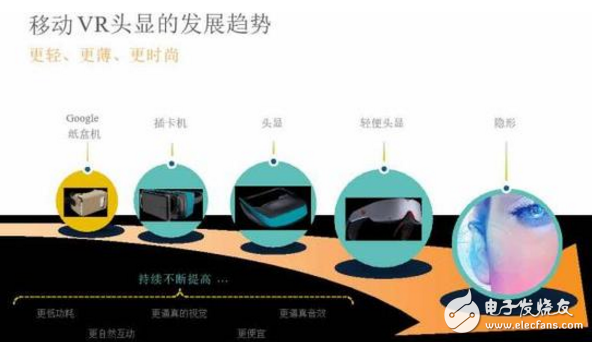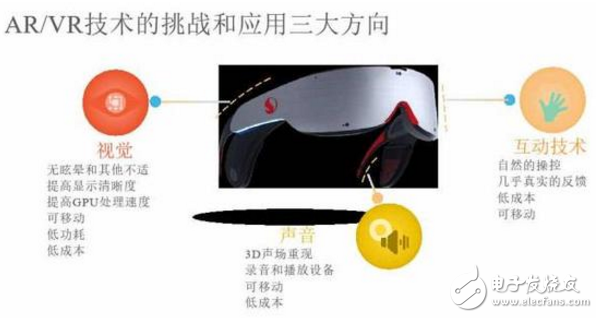Chinese angel investors have begun to deploy VR in the field five years ago. However, today, they have not waited for the breakthrough of this cutting-edge technology. Entrepreneur companies in the VR field can no longer be as popular as they were five years ago, as long as they have core technology. "Angels" have begun to emphasize profitability in different occasions.
Song Chunyu, general manager of Lenovo Music Fund, said at the "2016 Innovation China Autumn Summit" held in Hangzhou at the end of September that VR and AR are now particularly hot, but admission is now the most dangerous thing.
On the same occasion, Shen Jin, vice president of Qualcomm and managing director of Qualcomm Ventures China, said he is still optimistic about the VR field. He believes that VR is facing a technological peak that must be surpassed and will eventually be overtaken. When the VR headset display device reaches 1,000 yuan, it is the time when the revolution of the intelligent terminal device in the VR field broke out.

From September 21st to 22nd, the two-day 2016 Innovation China Autumn Summit was held in Hangzhou. Qualcomm (Qualcomm) Sequoia Capital Frontier Technology Innovation and Entrepreneurship Competition was held simultaneously, focusing on cutting-edge technology innovation companies.
According to the data provided by the “2016 China Innovation Autumn Summitâ€, a total of 4,109 start-up projects participated in the conference. Among them, there are 183 startup companies in the frontier science and technology field. Among the branches, 23% are engaged in VR. In the AR field, the Internet of Things is 19%, the robot is 18%, the artificial intelligence is 16%, and the drone field is 10%. Among the eleven start-up companies, five companies are in the VR/AR field and remain the most popular areas.
Three technical breakthroughs of VR
Shen Jin is one of the angel investors who started to deploy VR in the field five years ago. He believes that the VR field needs breakthrough technology and low cost that the public can accept. When the VR overall solution is worth a thousand dollars, like a smartphone, there will be a real outbreak.

Qualcomm Ventures entered the VR field five years ago, and has developed modules and chips suitable for VR products on the production side, continuing the layout logic of Qualcomm Ventures' previous industry chain.
According to reports, Qualcomm venture capital investment theme is mobile Internet, from 2008 to 2015, along the mobile Internet industry chain layout, from upstream semiconductor to terminal manufacturing, terminal design, to human-machine interface technology, to the public Applications, the final layout of the vertical industry through the transformation of the mobile Internet. Among the more than 30 companies investing in China, there are Xiaomi Technology, Zhongke Chuangda, and Touch Technology.
Shen Jin believes that VR currently faces technical breakthroughs in visual, auditory and interactive aspects.
Shen Jin said in an interview with Yu Wei, "The development trend of VR is that the head is lighter, thinner and more fashionable. Now it is still in the stage of wearing a cumbersome head display, and in the future, it hopes to have an invisible head."
In the mobile phone, the definition of the display has reached the level that the human eye can not distinguish, reaching the level of 2K, 4K. This definition is only a starting point for the display of VR. To achieve the limit of human eye recognition, the PPI of VR equipment should reach 2000. At present, the VR helmet of mobile phones and mainstream brands shows a PPI of around 500, which is emphasized by Shen Jin.
Sound processing is more difficult than video because it is more complicated in the program. Shen Jin said in an interview, "The vision in the VR field is 360 degrees. If the hearing is not 360 degrees, it will cause dizziness, at least the VR experience is not very realistic."
For the dual camera and dual ISP use, there are not many opportunities to open the front and rear of the two lenses on the smartphone at the same time. However, in the VR field, the demand for cameras is higher. Shen Jin said that there are already VR companies that have Qualcomm's demand for developing application modules that use eight lenses.
Shen Jin believes that in the VR field, computer vision does a lot of work through the camera, including recognizing the movements of the head, even using the camera to look at the eyeballs and making judgments, and also using the camera to sense the people around them or their movements.
The next generation of mobile virtual reality applications is complex, with extreme power constraints and challenging performance requirements. The logic of Qualcomm's industrial chain layout means not only designing and manufacturing higher-level processors for VR devices, but also developing appropriate development. Virtual reality software toolkit.
MINI POWER UNIT FOR MEDICAL FACILITY
Hydraulic Power Unit For Car,Hydraulic Lifter Remover,Electric Hydraulic Valve For Tractor,Car Lift Hydraulic Power Unit
CHANGZHOU ROHN HYDRAULIC SCI-TECH CO.,LTD , https://www.rohnhydraulic.com